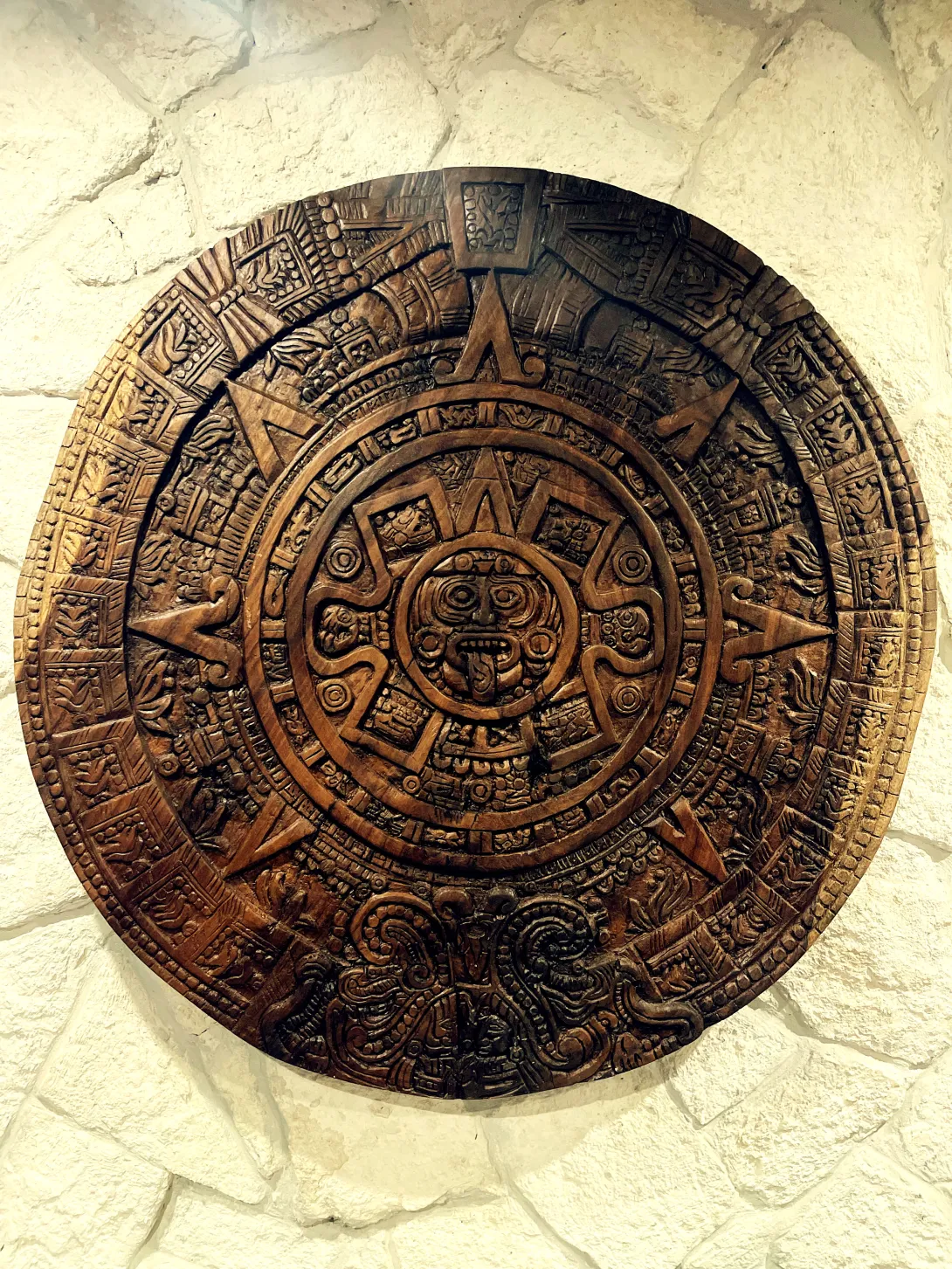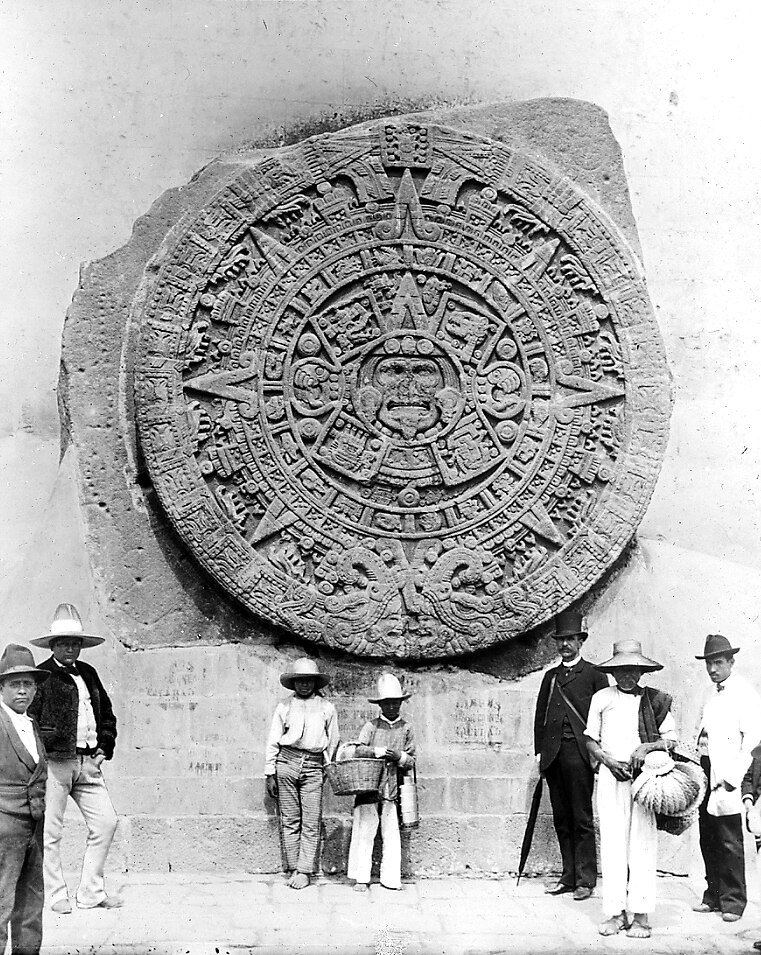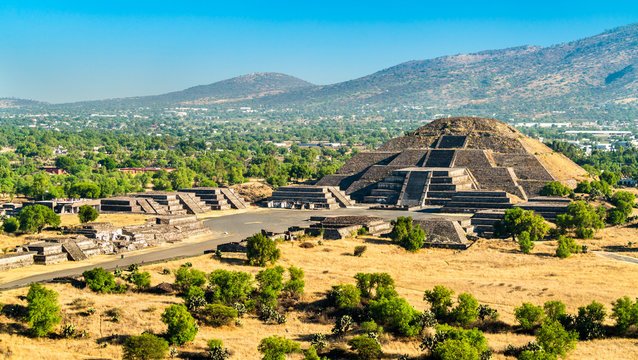Echoes of Time: Celebrating Aztec Heritage Through Art and Craftsmanship

At Quanna Property Services, we believe that every space tells a story, and every artifact holds a piece of history. Recently, we had the honor of bringing to life a client's vision—a handcrafted Aztec calendar that not only adorns a wall but also serves as a gateway to a rich cultural legacy. This project was more than a decorative endeavor; it was a journey through time, exploring the depths of Aztec civilization, their intricate calendar system, and the artistry that continues to thrive in our local communities.
The Aztec Civilization: A Glimpse into a Vibrant Past
The Aztecs, or Mexica, were a Mesoamerican people who flourished in central Mexico from the 14th to the 16th centuries. Their empire, centered in the capital city of Tenochtitlan (modern-day Mexico City), was a hub of culture, politics, and religion. The Aztec society was complex, with a well-defined social hierarchy, a pantheon of gods, and a deep connection to the natural world.
Agriculture was the backbone of the Aztec economy. Maize (corn) was the staple crop, complemented by beans, squash, chili peppers, and tomatoes. They also consumed amaranth, avocados, and cacao, the latter being used to make a ceremonial chocolate drink. Protein sources included turkey, duck, and various insects, reflecting a diet that was both diverse and sustainable.
Religion permeated every aspect of Aztec life. They worshipped a multitude of deities, each overseeing different elements of the universe. Rituals and ceremonies were conducted to appease these gods, often involving music, dance, and offerings. The Aztecs believed in the cyclical nature of time and the universe, a concept that was intricately woven into their calendar system.
The Aztec Calendar: A Masterpiece of Timekeeping

National Museum, Mexico City, Mexico. (Photographed in Cathedral tower before, (1886). New York State Archives
The Aztec calendar is a testament to the civilization's astronomical knowledge and artistic prowess. It comprises two interlocking systems: the Tonalpohualli, a 260-day ritual calendar, and the Xiuhpohualli, a 365-day agricultural calendar. The Tonalpohualli was used for divination and religious ceremonies, while the Xiuhpohualli guided agricultural activities and seasonal festivals.
The most iconic representation of the Aztec calendar is the Sun Stone, or "Piedra del Sol." This massive stone disc, measuring over 12 feet in diameter, is intricately carved with symbols representing days, gods, and cosmic elements. At its center is the face of Tonatiuh, the sun god, symbolizing the importance of the sun in Aztec cosmology. The surrounding glyphs depict the 20-day signs of the Tonalpohualli and the cardinal directions, emphasizing the Aztecs' sophisticated understanding of time and space.
The calendar was not merely a tool for tracking days; it was a reflection of the Aztecs' worldview. They believed that the universe underwent cycles of creation and destruction, and that human actions could influence cosmic events. Thus, the calendar played a crucial role in aligning societal activities with celestial movements, ensuring harmony between the earthly and the divine.
Crafting the Calendar: A Fusion of Tradition and Modernity
When our client approached us with the idea of creating a handcrafted Aztec calendar, we saw an opportunity to blend historical reverence with contemporary craftsmanship. Collaborating with one of our talented local artisans, we embarked on a project that would pay homage to the Aztec legacy while showcasing the skill and dedication of our community's craftsmen.
The process began with extensive research into Aztec iconography and symbolism. Our artisan meticulously studied the Sun Stone's intricate designs, ensuring that each glyph and motif was accurately represented. Using traditional carving techniques, the calendar was brought to life on a carefully selected wooden canvas, chosen for its durability and aesthetic appeal.
Throughout the project, attention to detail was paramount. From the precise rendering of Tonatiuh's visage to the delicate etching of the day signs, every element was crafted with care and respect for the source material. The finished piece is not only a stunning work of art but also a tangible connection to a civilization that continues to inspire and captivate.
At Quanna Property Services, we take pride in our ability to bring unique visions to fruition. This project exemplifies our commitment to celebrating cultural heritage, supporting local artisans, and delivering exceptional craftsmanship. We believe that by honoring the past, we enrich the present, creating spaces that resonate with meaning and beauty.
Embracing Heritage Through Design
This handcrafted Aztec calendar stands as a testament to the enduring legacy of the Mexica people and the vibrant artistry that thrives within our community. It's more than a decorative piece; it's a bridge between eras, a conversation between the ancient and the modern.

🏛️ Teotihuacan: The Place Where Gods Were Born
Long before the rise of the Aztecs, the ancient city of Teotihuacan stood as one of the most powerful and mysterious urban centers in Mesoamerica. The name Teotihuacan, given by the Aztecs centuries later, means “The place where gods were born.” This title reflects the city's sacred status in Aztec mythology, believed to be the site where the gods convened to create the sun and moon.
Though the original builders of Teotihuacan remain unknown, the Aztecs regarded it with deep reverence, often making pilgrimages to its massive pyramids—particularly the Pyramid of the Sun and Pyramid of the Moon. These structures aligned with celestial events, mirroring the same astronomical reverence found in the Aztec calendar system.
To the Aztecs, Teotihuacan was not just ruins—it was a divine blueprint, a sacred city that held the echoes of origin and cosmic purpose, bridging their past with the forces that shaped their world.At Quanna Property Services, we are dedicated to crafting spaces that tell stories, evoke emotions, and celebrate the rich tapestry of cultures that define our world. Whether through bespoke projects like this or our comprehensive property services, we strive to infuse every endeavor with authenticity, passion, and excellence.
If you're inspired to incorporate elements of history and culture into your space, or if you have a unique vision you'd like to bring to life, we're here to help. Let's create something extraordinary!